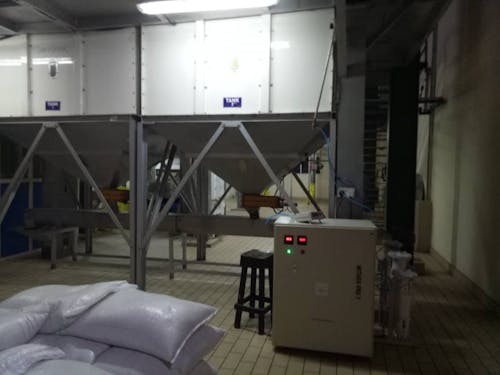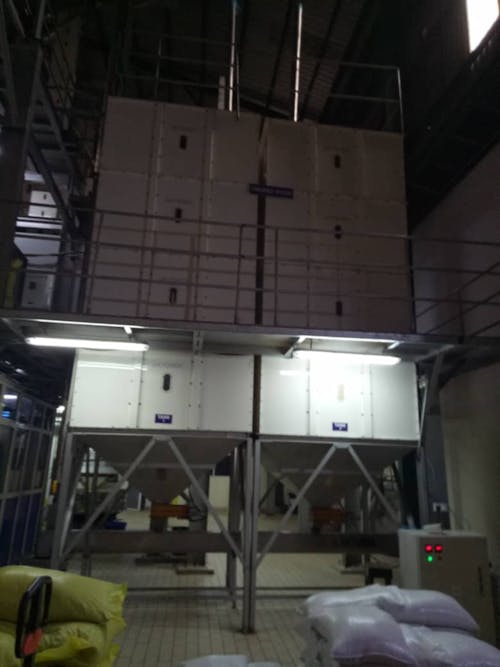

We have been performing Ozone fumigation of food grains for the last two decades all throughout the Indian Army, food brands like Nestleand other versatile food processing factories around the world.
One of our installations to kill Salmonella virus from sesame seeds at West African Cotton Company Ltd (WACOT), Nigeria, can be seen on this page.
Working Procedures
There are many critical observations, which pointedly indicate that the safest and most environment friendly method for destroying the molds and insects is a high scale Ozone fumigation of the grains. The most attractive reason is that Ozone does not impart any toxic residue, unlike the conventional pesticides, mostly in the tablet form.
Ozonated Disinfection via Silo Tank (as shown in pictures above, using Food-Grade WITHERPRO7 model) : In this standard method, ozone in gaseous form is injected inside the silo containing grains including cereals, in a counter current flow. Detailed examination explicitly illustrates the concentration of Ozone needed inside silo to get rid of all such menace. For storage outside silo, even injection of ozone gas at a particular concentration through lateral pipelines below the stack yields the same results.
Ozonated Disinfection via Conveyor system : In this standard method, ozone in gaseous form is injected just before the conveyor inlet, which allows ozone to mix with the flowing food products inside the conveyor and results in disinfected products at the end of the conveyor. Watch the process here : https://drive.google.com/file/d/1VAw7Eg3Ynpt4SRMP4AeOEu7YPjzJB0TZ/view?usp=share_link. Conveyor-connected Food-Grade Ozone generator model : https://drive.google.com/file/d/1y_Igd2dg415R3aBxCQBbwaDM8wDEwgEX/view?usp=share_link.
The sole purpose is to get rid of the molds or fungi that come from invisible spores in the environment and small insects. With profuse Ozonation, both these can be summarily removed. The dosage of ozone depends on various conditions like quantity, specific gravity of grain, infection load of the grains, type of enclosure or environmental effects.